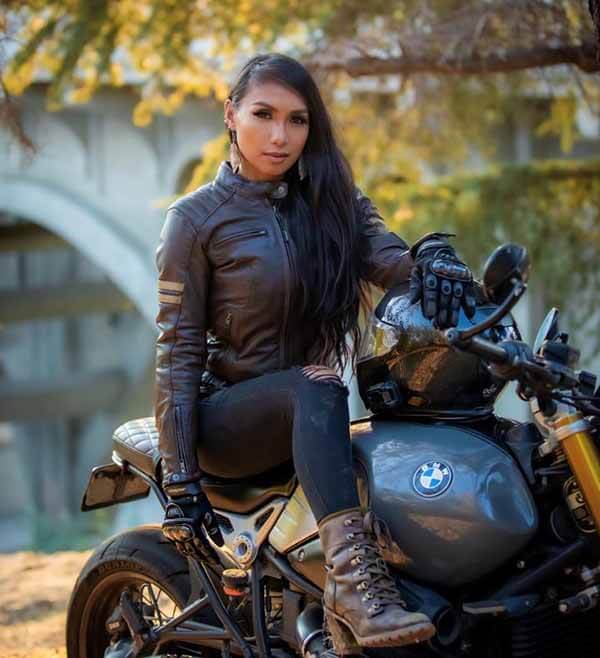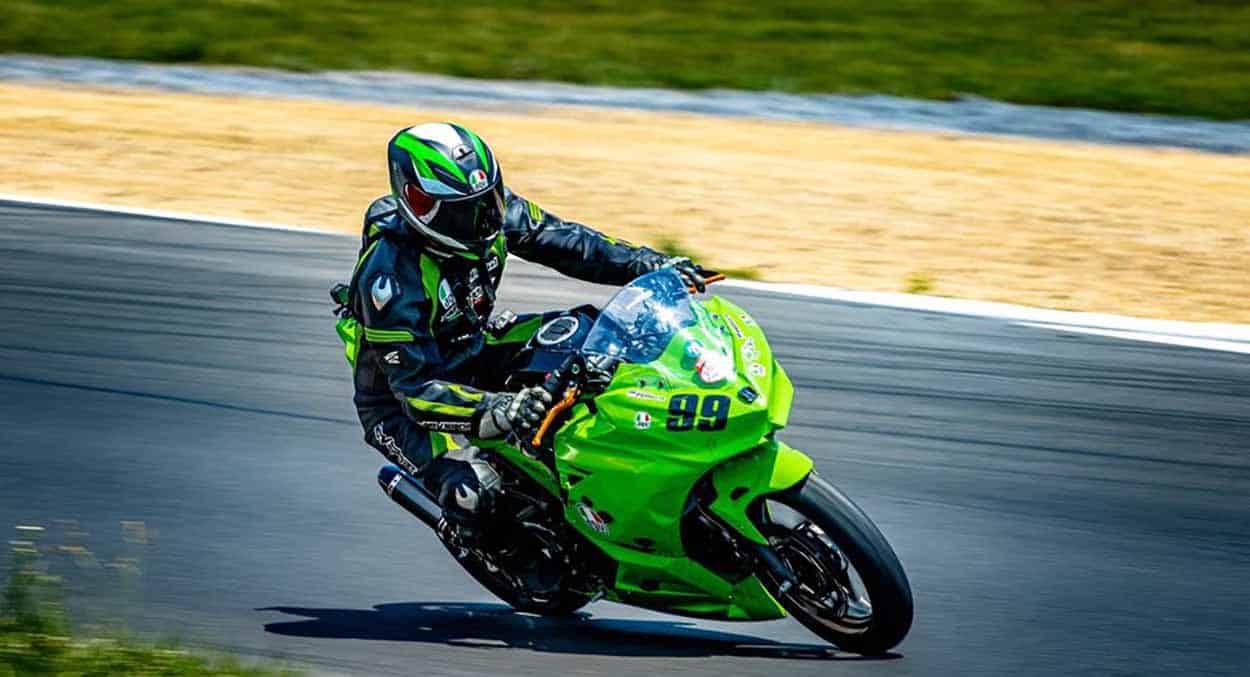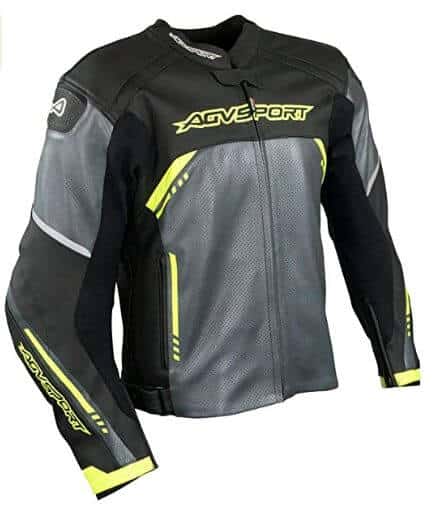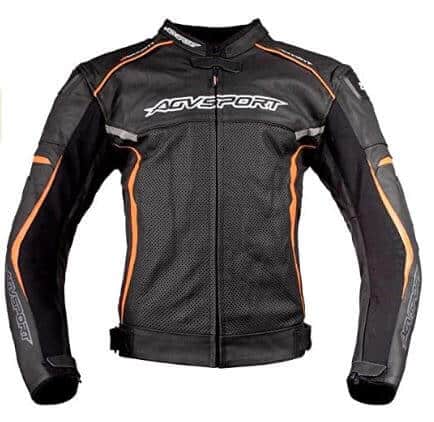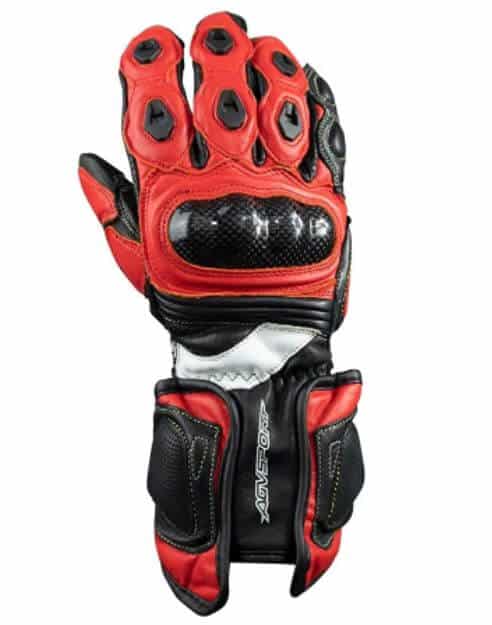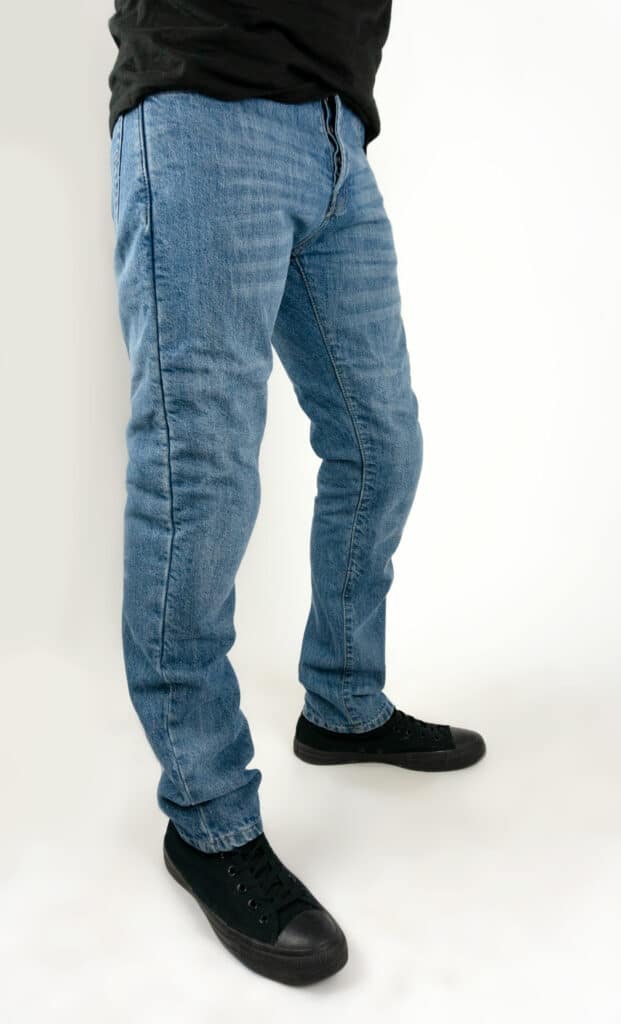The Proper Riding Gear for Motorcyclists to Protect Your Head and Body. We have all seen motorcyclists riding without a helmet and gloves in a T-shirt with shorts and tennis shoes, sandals, or flip flops. Ease riders are a great income source for the skin graft industry!
To be able to enjoy the experience of riding your motorcycle for many years to come you should protect every part of your body as much as is reasonably possible.
You can aid in preventing injury or even death and you will also reduce little things like being pelted by rain, bugs debris, prevent sunburn and burns to your legs from exhaust heat, etc.
Most motorcyclists ride because there is a certain freedom that comes from motorcycling that cannot be experienced in other forms of transportation. The flip side of this is that you are more exposed to the environment and more susceptible to injury in the event of an accident.
Motorcycling is an inherently risky sport. The National Highway Traffic Safety Administration (NHTSA) reports that riding a motorcycle is 33 times more dangerous than driving a car.
Most riders have heard the age-old saying” there are only two kinds of motorcyclists. Those who have crashed and those who are going to crash”.
Riding a motorcycle will never be an entirely safe activity and if it was it would probably lose a lot of its appeal. However, you can reduce the chance of injury or even death not only by learning the proper riding skills but by wearing the correct safety gear head to toe.
So, What to Wear When Riding a Motorcycle?
1. Helmet
Given the brain has a leading role in maintaining the liver function, it generally pays to protect it. The best way of doing this is with a good-quality helmet that’s fit for the type of riding you do. Helmets, of course, come in a range of different shapes and sizes, so how do you know what helmet is best? As a rule, the more of your head that is covered the better protected you are.
This means full-face helmets are by far the safest helmets out there. Full-face helmets are also referred to as full-coverage or integral helmets. Not only do they protect the head, but the chin bar and visor mean that they provide protection for your face.
While they can be a little hot and heavy, technology has seen advances in the technology relating to ventilation systems to keep you cool, and the range of modern composite materials like Kevlar and Carbon fiber is used to construct them means that weight is becoming less of an issue.
Modular helmets perform almost as well in several circumstances, with the flip-up chin bar and visor pivot being a potential point of difference in terms of safety.
Open-face helmets often referred to as ¾ or Jet style helmets cannot provide the same level f protection as a full-coverage helmet be it a fixed integral style or modular. While open-face helmets can provide a high level of protection for the rear, sides, and top of the head they do not offer much protection for a direct frontal impact on the facial area.
½ helmets or skull cap type helmets are the least protective of all and generally do not meet most of the international or national safety standards for helmets.
When selecting a helmet, you should at least make sure that it is DOT approved * (a DOT sticker is placed on the rear of the helmet) and that it fits snugly and comfortably. The helmet should not move around easily, nor should it fit too tight that it hurts. You should also choose a helmet to have good ventilation. It’s a good idea to buy a helmet that is brightly colored and easily visible.
Optional: a nice feature for motorcycle helmets that you may want to consider is its ability to have a Bluetooth communication system easily installed as well as speakers. Some model helmets can be purchased with the Bluetooth system already installed from the factory with a Bluetooth system, you can easily answer your phone without having to pull over to talk or miss the call entirely.
HELMET LAWS: most countries in about half the states in the US have some type of helmet laws in order to be able to ride a motorcycle legally. Penalties for not wearing a helmet vary greatly depending on the jurisdiction. Hopefully, the primary reason you are wearing a helmet is to protect yourself and the second reason should be fear of a large fine or points on your driver’s license as well as increased insurance rates.
2. Jacket
It’s the middle of summer, the sun’s beating down, and a motorcycle jacket is probably the last thing you want to wear, but your skin will thank you for it. A good quality motorcycle jacket is probably the best abrasion protection money can buy in the event of a spill or accident. Not only that but it protects your skin from the heat of the sun, and on a bad day the rain. Some motorcycle jackets may incorporate high-tech composite materials like DuPont Kevlar.
AGVSPORT Imola Men’s Motorcycle Jacket
Additionally, modern motorcycle jackets may offer additional protection by including modern body armor on the shoulders, elbows, and back. These body armor components have excellent shock-absorbing ability and can protect the rider against injuries to bones and joints.
Leather still far and wide leads the pack when it comes to the choice of materials. A high-quality leather jacket is at least double, or triple-stitched for additional durability. If you’re going to be riding at night, one with reflective piping or tape is a worthwhile investment. Leather has a unique quality that few motorcycle riders are aware of- it is “self-lubricating”. So, when sliding it does not dig in and cause twisting and torsional forces as it slides easily compared to many other materials over road surfaces.
Also, different types of leather provide different levels of protection and comfort. Motorcycle jackets can be made of cowhide, Kangaroo leather, sheepskin, Buffalo leather, and Goatskin. Cowhide is also available in several different thicknesses which affect both the level of protection as well as comfort.
AGVSPORT Aragon Men’s Leather Motorcycle Jacket
There is a wide range of other products on the market that also do a pretty good job if leathers are not your thing. Cordura fabric is often used for high-quality textile jackets.
Fit is an important tissue for all your motorcycle safety gear and apparel. You need to know your riding style and be sure to sit on your bike and make sure the jacket is first, probably when in your various riding positions. The length of the arms is often a critical measurement. You should make sure the jacket is not too tight, so it rides up your back but is also not too loose that causing bunching or flapping when riding at higher speeds.
If you are going to be riding in wet weather conditions, then a textile jacket or a waterproof treated leather jacket may be a better option for you. Textile jackets are most popular in cooler, wetter riding conditions and are the staple for Adventure touring gear and apparel. Good quality snaps or Velcro hook and loop type fasteners will assure snug closures for the wrists and neck areas.
Many newer jackets feature good ventilation systems with adjustable closures, so this is another feature to look at. If you are riding in cool to cold weather, you will want to make sure that the jacket has a good insulating liner. Often, they are removable so you can use them year-round.
You don’t have much choice for leathers but there are a wide variety of color options for textile jackets. You may want to consider a brighter color or even a “Hi-Viz” colorway for added visibility to another motorist.
3. Gloves
AGVSPORT Laguna Motorcycle Leather Racing Gloves
You can never predict what type of accident you are going to have so it is impossible to know for certain what piece of protective gear is going to be the most important item of apparel you will be wearing at the time of your crash. Gloves are often overlooked and it’s quite common to see someone riding with a $500 full-face helmet with no gloves on.
There is a natural biological instinct to put your hands and arm out to break a fall that many motorcyclists don’t consider. The hands are often one of the most impacted areas in a large number of motorcycle accidents. After having a good helmet, wearing a pair of gloves may be the next most important piece of safety apparel that you can wear.
A good pair of gloves can be a godsend. Not only do they protect your hands and fingers against the elements but they’re essential if you meet the pavement or road. Gloves also assist in controlling and operating the gears and brakes and gripping the motorcycle itself.
As with jackets, leather leads the pack. Gloves with hard armor for the knuckles provide the most protection. It’s worthwhile looking for a couple of features when by gloves that can assist with both comfort and function. They include mesh or cellulose materials to block wind and protect from elements and long fingers to fit over controls better.
When considering gloves be sure to choose a pair that are easily adjustable to ensure the perfect fit.
4. Pants / Jeans
You guessed it, leather. When it comes to pants the consensus is leather is best. As with the jackets, there is a range of other products, such as synthetic fabrics, aramid, reinforced denim, and Kevlar It’s worthwhile getting pants that have extra padding on the knees and around the hips as these are the area most likely to have the most contact with the ground in a spill.
The things to remember when looking at products beyond leather, and the same applies to motorcycle jackets is there are certain qualities that need to be present, durability, abrasion resistance, and fire and water resistance.
Remember when you are buying your pants that you will be predominantly sitting not standing when wearing them. You want them to be a snug fit but not too tight. Loose pants easily snag on things that can reduce effectiveness.
Just like jackets if you are riding predominantly in cooler or wet conditions you may want to choose a textile glove. As with jackets, most gloves for adventure touring use are made from textile materials.
Make sure the model pants you choose have adequate pockets, preferably multiple pockets, even some with zipper closures. For cold weather use, text tile models for wintertime usually offer the best types of insulation.
5. Motorcycle Boots
The importance of a good pair of motorcycle boots cannot be underestimated. This is often one piece of motorcycle safety apparel that many riders go without. Even the most inexpensive motorcycle boot offers substantially more protection than a normal pair of everyday shoes.
Your boots are going to be one of your main points of contact on the road when riding so they need to be strong and durable. Look for triple stitching to keep the soles attached to the shoe. Remember the last thing you want is your boots coming apart in an accident.
Try to go with a decent thickness sole on the boot for enhanced protection. If you can get soles that are oil-resistant that’s even better. Your boots should extend above your ankle and ideally be reinforced or padded in the ankle area for added protection.
Again, the right fit is essential, you don’t want your foot slipping out of your boot when you need the protection most.
Motorcycle boots for sports riding or road racing will feature many types of shins and ankle armor as well as internal shock-absorbing foam pads. these boots will be more expensive but will offer significantly more protection from impact-related injuries.
6. Eye Protection, Glasses & Goggles
If you decided to go with a helmet that didn’t have a visor, you’re probably also going to need to invest in a decent pair of glasses Google. The reason is dirt, rocks, bugs, and other foreign objects are likely to fly into your face and eyes as you ride. These can be a major safety issue, but one that is easily overcome with a good pair of goggles. If you won’t wear goggles at least wear a good pair of riding glasses.
The two most important things to think about when purchasing a pair of goggles are the optics of the land and the comfort and fit of the frame to your face. Having your vision distorted by a poor-quality lens will be both irritating and unsafe. if the goggles are uncomfortable to wear, they’re likely to give you a headache which will ruin your riding experience.
What About Underneath?
Underneath your riding gear, you can within reason whereas you please but remember it’s likely to be hot and sweaty somedays, especially in summer. Going with garments that are made of cotton or remove moisture from your body are firm favorites among the motorcyclist community, with most of the major manufacturers offering a range of different products to choose from.
Whenever you head out on the bike, it’s important that you take the time and wear the appropriate safety gear. Although it can be tempting to make that five-minute drive-in short and a t-shirt and ride as carefully as possible, you can’t account for the behavior of other road uses, and the last thing you want is for the one time you didn’t gear up to be the one time you needed too.
1. Rain Gear
It’s always a good idea to have some rain suits or a rain poncho handy so you’re always prepared for an unexpected shower or thunderstorm. Rain gear should be easy to put on quickly over whatever riding apparel you are wearing.
Whatever you choose to make sure there are good closures at the wrist, neck, and ankle area to prevent water from leaking and becoming uncomfortable. It is also possible to purchase boots and glove covers which will help keep you dry, especially if you do not have waterproof apparel.
2. Cold Weather Wear
If you are going to ride in a cold environment, then you need to consider the type of riding gear you will purchase. The widest variety of cold-weather gear will be available in textile materials with many different types of insulation available. Using layers will also help keep you warm and starting with a good set of thermal undergarments or underwear is the best choice.
Choose gloves and boots with good insulation as well. Or you may select to get electrically heated gloves, vests, and jackets which are a very nice option for really cold weather riding.
If you live in an area with climate changes, think about what to wear in cold weather. The best bet is to layer. You can start with thermal underwear beneath your everyday clothes. Make sure you have a very warm jacket, warm socks, and insulated boots and gloves. You can also purchase electric vests, jackets, or suits that provide additional warmth.
Motorcycle Safety Gear for Night Riding
Even with headlights and taillights, you should always wear gear that makes you clearly visible to other drivers. Wear brightly colored or reflective clothing, or you can put reflective strips on your helmet and the backs of your boots.
It’s always better to use extra caution and do everything in your power to make yourself visible to other motorists.
Michael’s Summary and Conclusion
Wearing the proper safety gear is the one simple thing that motorcyclists could do to greatly reduce the chance of injury while riding. Unfortunately, we are all humans and between wanting to be totally comfortable or being lazy or cheap too often we don’t wear the protective clothing in gear that would make riding so much safer.
I have been fortunate that in all my years of riding, I have never had a serious injury due to failure to wear the proper protective gear. Well, fortunate until very recently! A few months ago, I was riding on a dual sport ride in Thailand in a National Park, and I was only wearing high-top tennis shoes.
I was coming down the mountain toward the end of the day when it started raining and I slept on a rock face, my foot and ankle got smashed between the cases of the CRF250 Honda I was riding and the rocks. This injury led to me being in a cast and a foot brace for almost two months and was most certainly totally avoidable had I been wearing any type of off-road motorcycle boot.
Most riders dress as if they’re never going to crash or at least not going to crash that day when in fact you should go out and every ride like you know you are going to fall on that given day. Everybody knows riders who are just going out for a brief ride that ended in tragedy or at least in great pain because they didn’t take an extra few minutes to put on the proper safety equipment. don’t be that rider.
Information for this article was partially sourced and researched from the following authoritative Government, educational, corporate, and nonprofit organizations:
Motorcycle safety – the rider and the gear
FM/M+L

